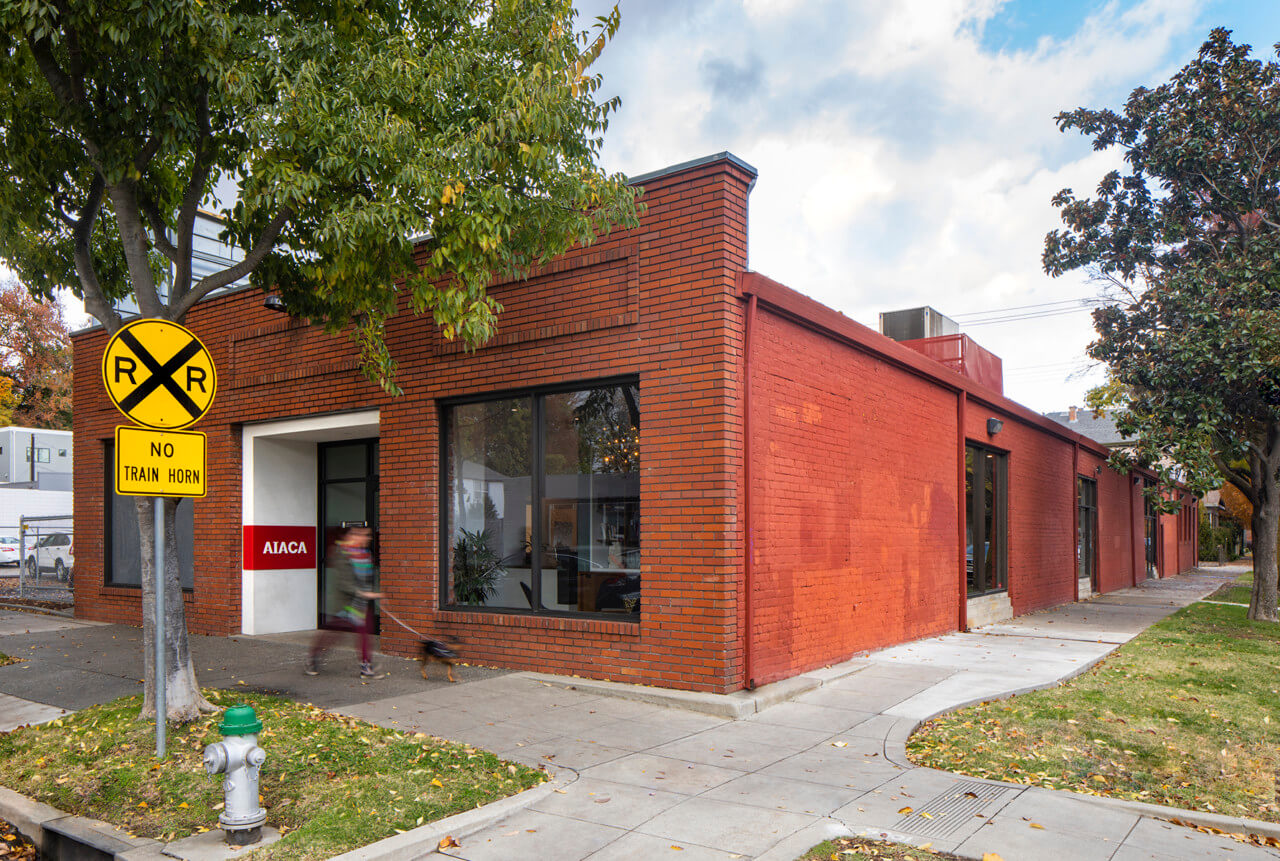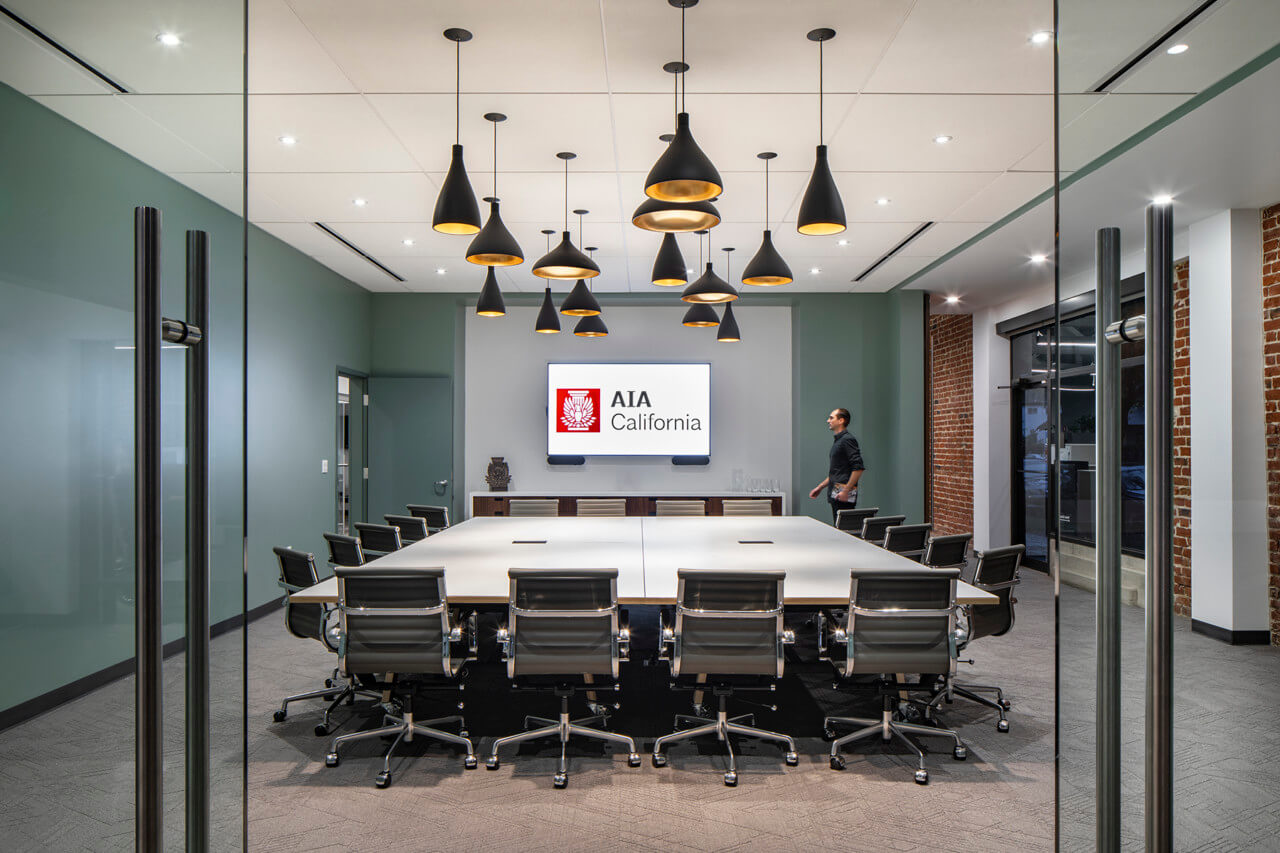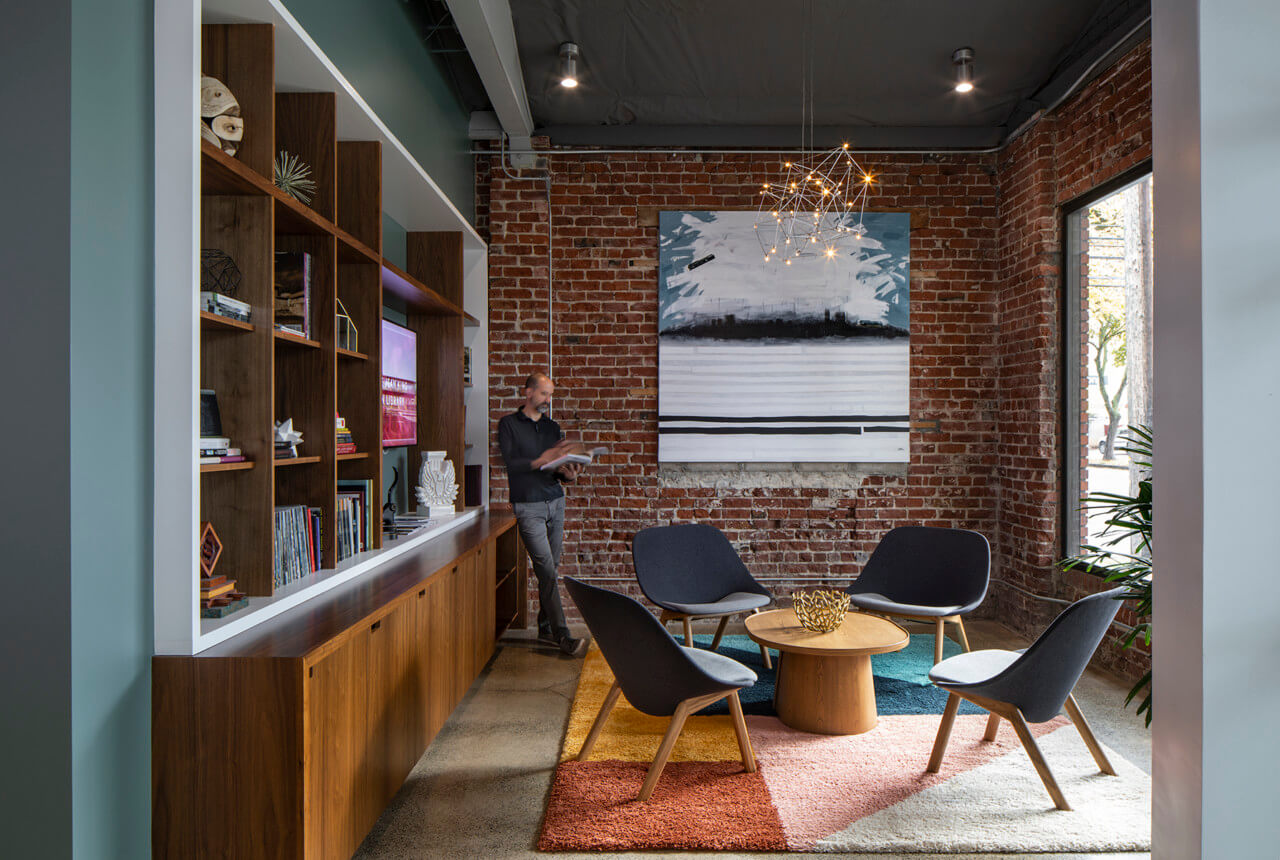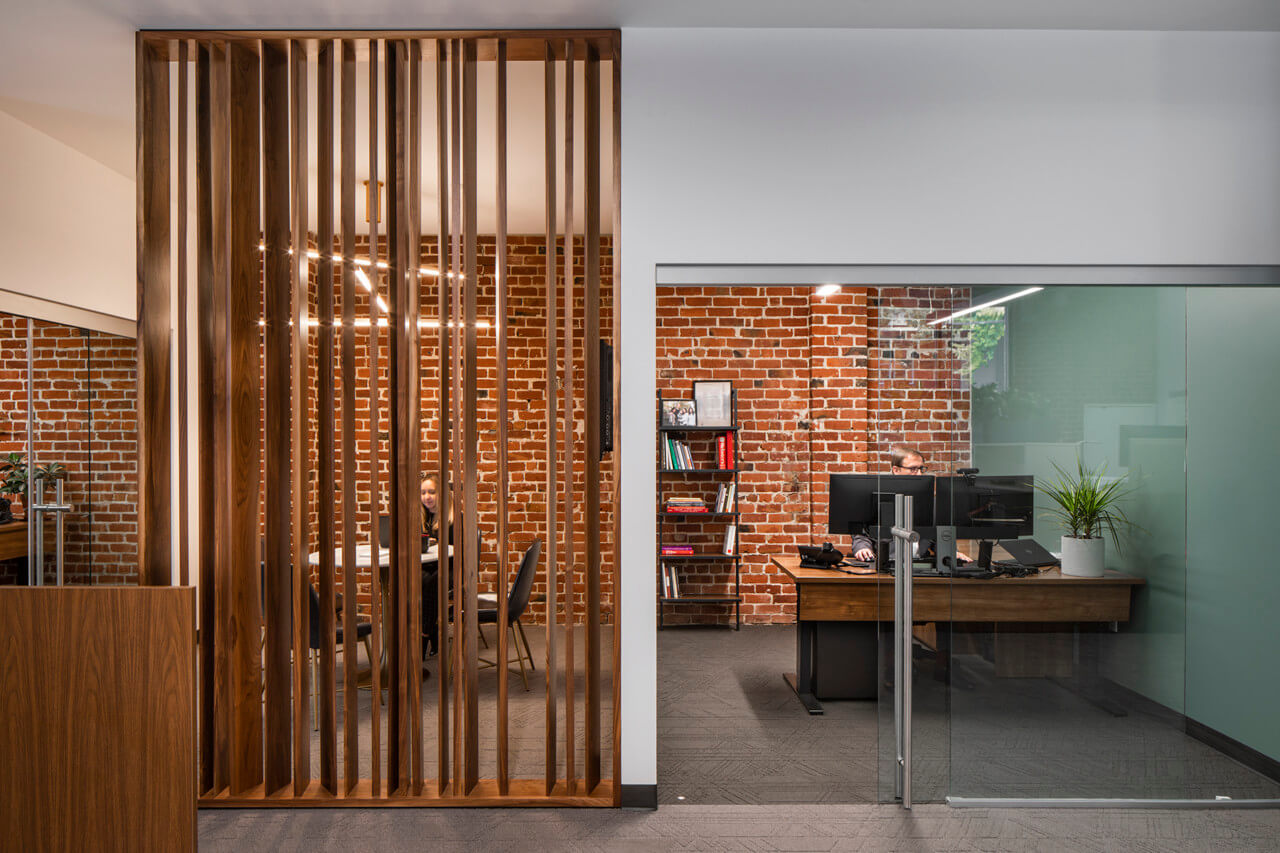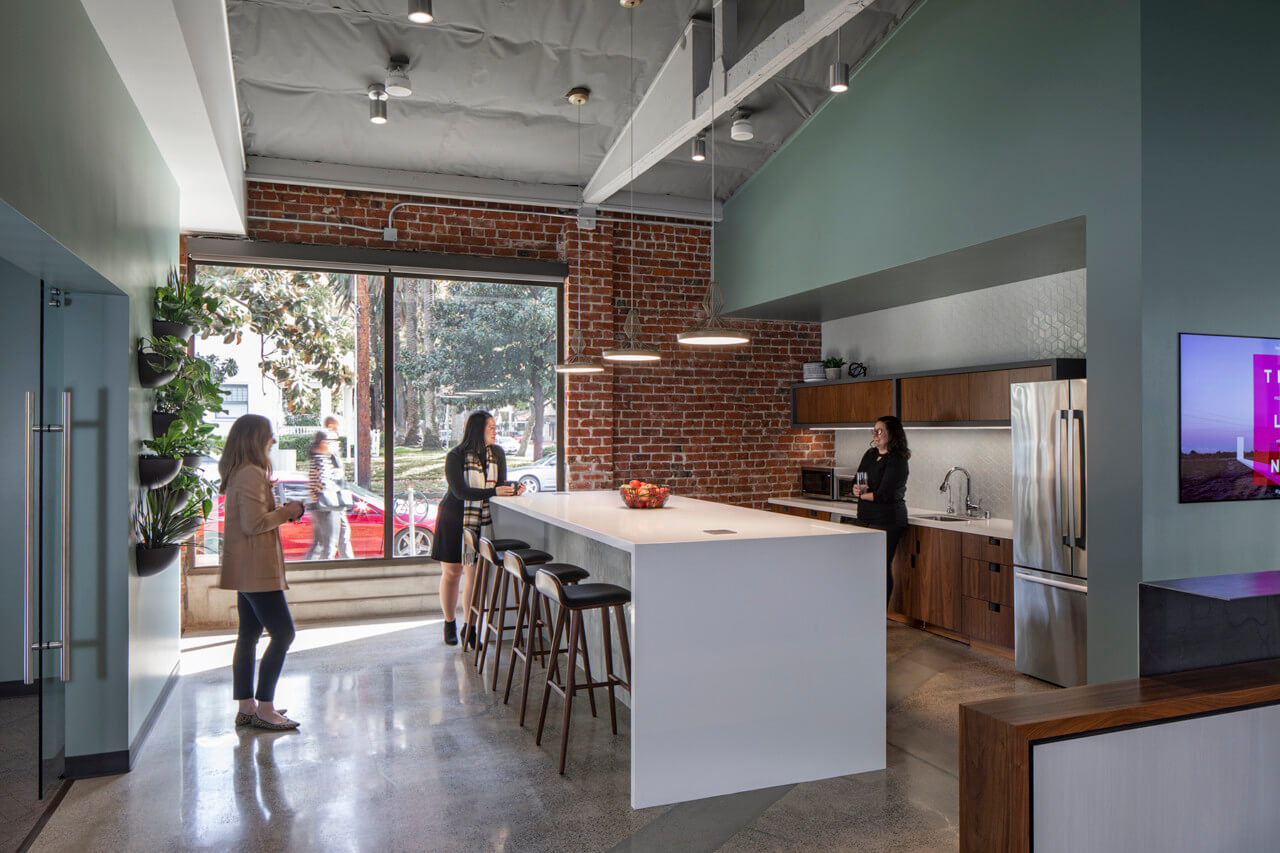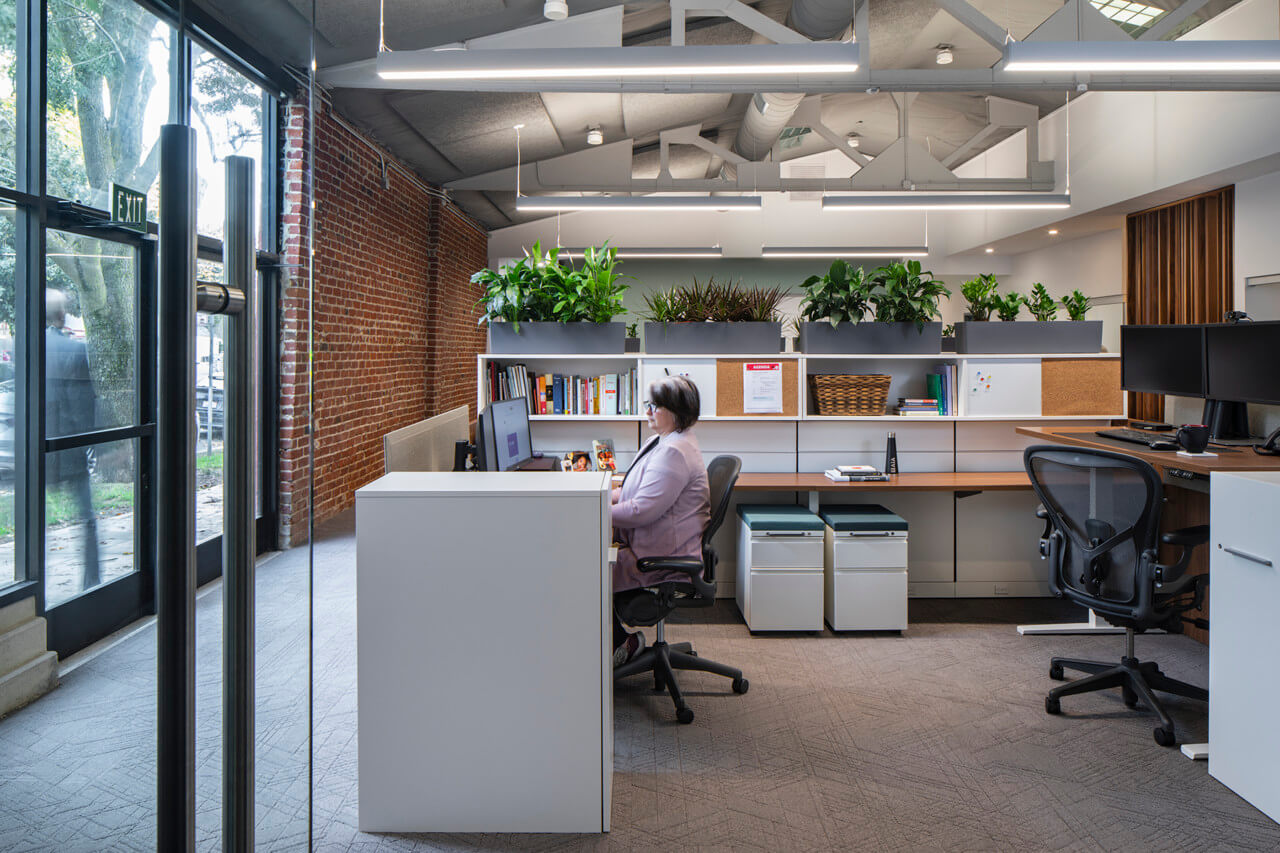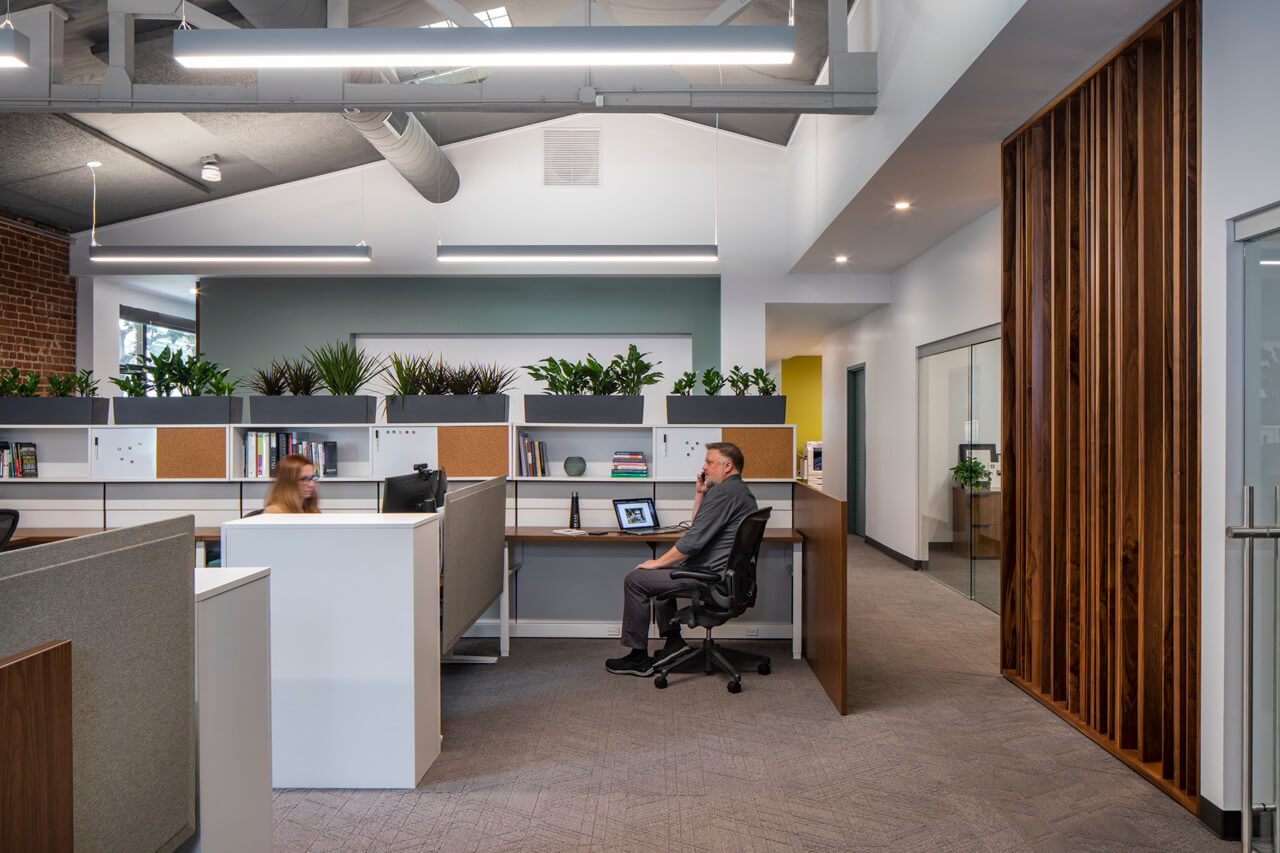With the expansion of the headquarters of the largest local California chapter of the American Institute of Architects now underway in San Francisco’s Financial District, it seems fitting that the Golden State’s statewide chapter, the American Institute of Architects California (AIA CA), has also recently relocated into fresh new digs.
Located at 1931 H Street within the Boulevard Park neighborhood of Sacramento’s hip Midtown district, the new AIA CA offices—designed by Dreyfuss + Blackford with Jackson Construction serving as general contractor—gives new purpose to a one-story brick building dating back to the 1930s that was previously, and fittingly, home to the architectural practice of Ralph Vitiello and was, for several years, a coworking space.
While the original use of the 4,800-square-foot building is unclear, Brian Lefholz, a project designer and associate at Dreyfuss + Blackford, surmises that it was likely an industrial one given the building’s close proximity to Union Pacific’s Sacramento Subdivision freight rail line that cleaves straight through Midtown (and directly next to 1931 H Street). Many of the AIA CA’s new neighbors have also taken advantage of the area’s surplus of old industrial buildings and railroad-flanking leftovers, including the Old Spaghetti Factory (the long-ruling king of adaptive reuse in the world of Italian-style casual dining chains), which is located in a repurposed Mission Revival–style rail depot built in 1909. A bit farther afield is the R Street Corridor, a lively retail and dining destination set along a stretch of historic warehouses.
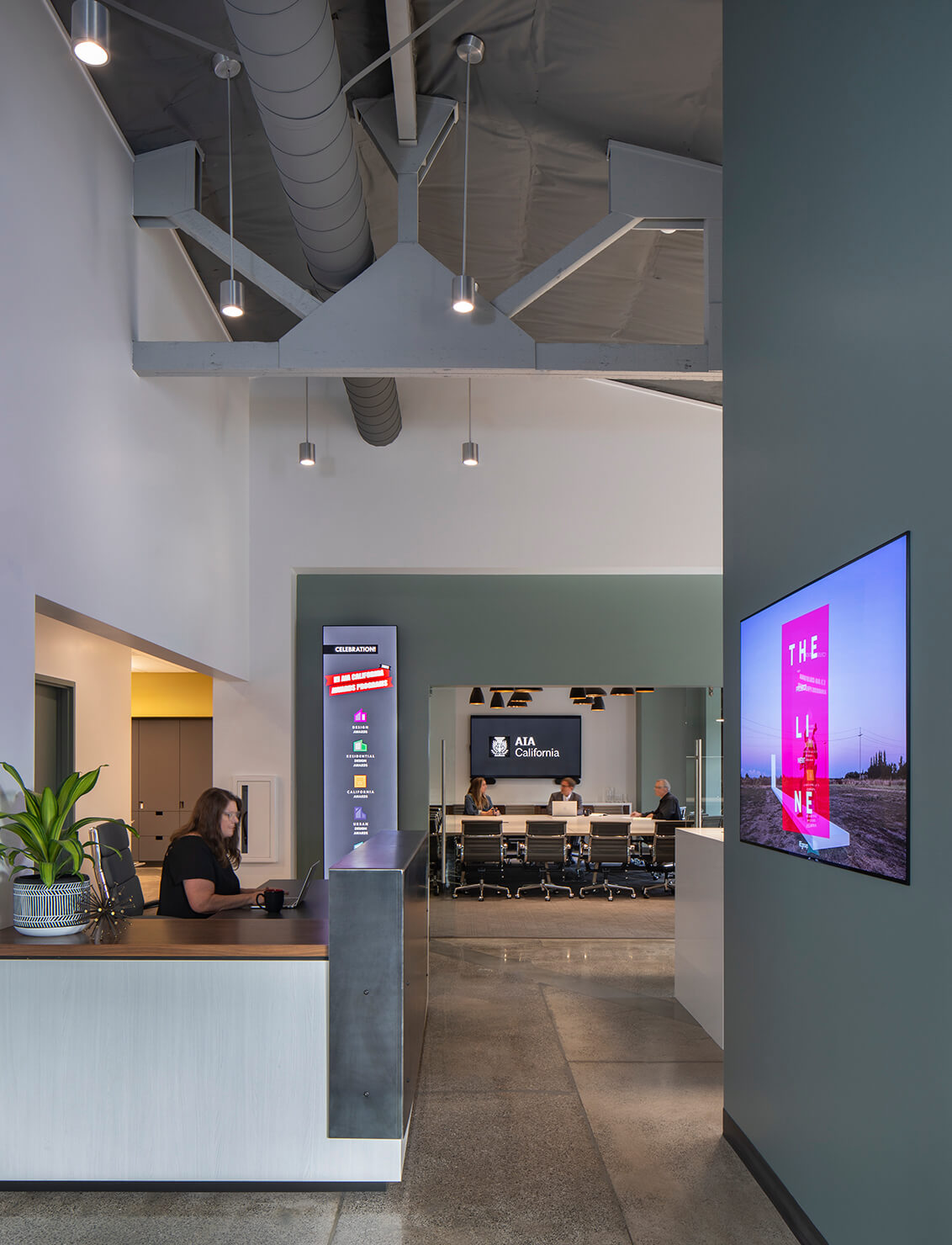
The AIA CA’s move into a building that predates the organization itself—it was chartered by the AIA in 1944 as the California Council, the American Institute of Architects or CCAIA before later becoming the AIACC—offers the chapter’s 13 full-time employees a dramatic change of scenery from its former home of over 40 years on the second floor of a nondescript East Sacramento building.
Whereas the chapter’s old offices were removed from the street and farther away from the State Capitol complex (the move means a shorter commute for AIA CA lobbyists zipping to and from the capitol), the new Midtown location affords the chapter with an opportunity to ingrain itself with the city that it calls home. And it doesn’t hurt that it’s doing so in one of the most vibrant areas of Sacramento, known for its cultural venues, buzzy bars and restaurants, and wealth of Victorian homes that line the neighborhood’s tree-lined streets.
As Lefholz explained to AN, AIA CA’s arrival in Midtown has been a friendly but not overly conspicuous one as the firm left the exterior of the building largely unchanged during the renovation process save for “new entry and signage elements, which were subtle in design and bold in color,” he said. “The new location gives AIA CA a welcoming presence that was missing, due to the location of their previous office.”
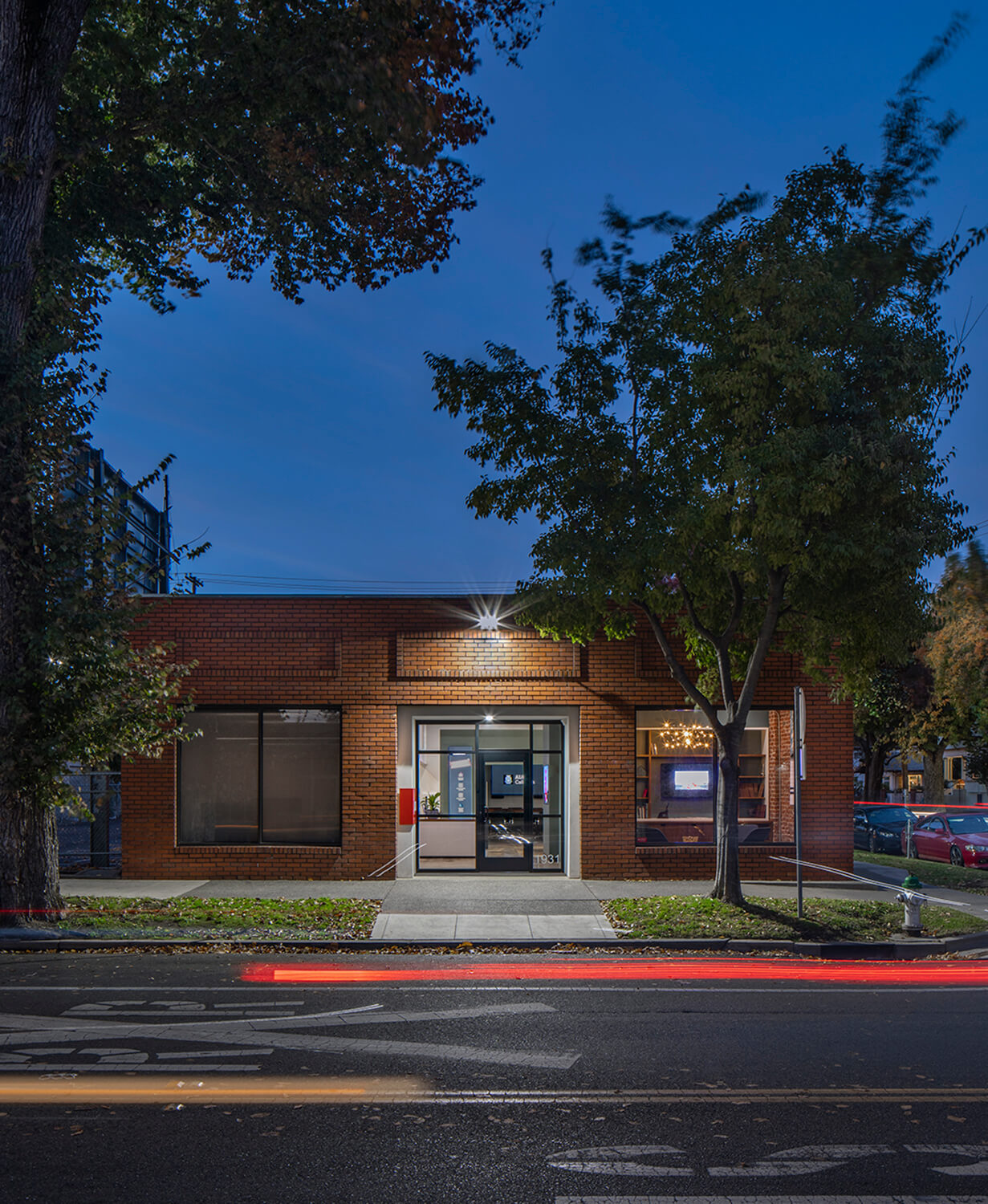
Lefholz noted that the building, which was chosen when it became available somewhat late in the game during a site “exploration period,” was actually a familiar one to some of the firm’s employees who had previously worked at Vitiello & Associates (which merged with DLR Group in 2000). A sense of familiarity also defined the working relationship between Dreyfuss + Blackford, established on J Street in Sacramento in 1950 and still headquartered in the city, and the AIA CA on the project. The two have had a longstanding relationship with the latter bestowing the former with a fair number of honors over the years, including the coveted Firm Award in 2013.
Lefholz pointed out that because the practice has had numerous architects serve as members on AIA CA committees and boards, relationships were forged that “gave them the confidence that Dreyfuss and Blackford was the right fit” for a role that involved guiding the chapter through the site selection, planning, design, and construction processes for the project. The $750,000 project took 25 months to complete from the site selection phase through completion of renovation work.
While the exterior of the building helps the AIA CA establish a long-needed street-level connection with Sacramento, the renovated building’s interior is designed to meet the distinct organizational needs of the chapter. To that end, the centerpiece of the new space is a large conference room, which can accommodate board members from the 22 local chapters that compose the AIA CA, which is the largest state architectural organization in the United States.
“It was important to create a space that could accommodate these [board] meetings, yet be flexible enough for use throughout the year for other functions,” said Lefholz. “This new large conference room is one of three seamlessly connected spaces that allow access to the adjacent areas and flow together for flexibility and to accommodate small impromptu conversational meetings as well as larger board member meetings.”
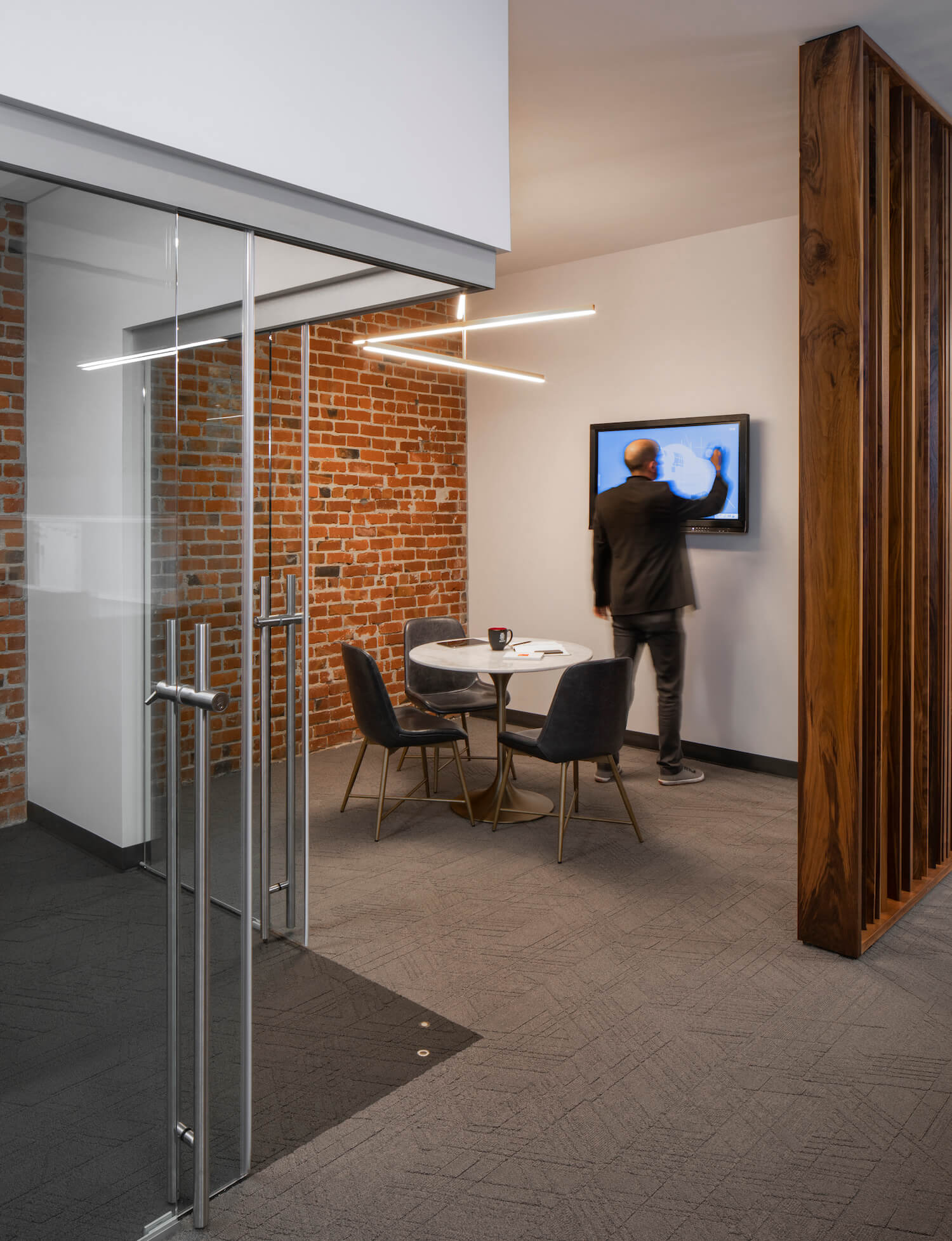
Custom cabinetry designed by Dreyfuss + Blackford and fabricated by a local Sacramento company can be found throughout the revamped building, including in the reception area, the kitchen, the wellness room, the main conference room, and in an intimate lounge area/library, which is appropriately well-stocked with books showcasing the works of Californian architects. In a smaller conference space is a handsome milled walnut partition custom-designed by the firm. The concrete flooring and exposed wood trusses are original features of the building, which the firm said possesses “tremendous character.”
Other features include Herman Miller furniture systems in the building’s open and private office areas and Klein-USA sliding glass doors for the conference spaces and private offices—including the corner office of the executive director—that allow for better natural light and a more seamless flow between different individual work and collaborative spaces.
“We engaged all staff members to capture the raw data that would allow us to design a space that met the needs of the many varied roles and responsibilities of each staff member,” said Lefholz of the working and visioning sessions held in the old AIA CA lobby before work on the new space kicked off.
Seventy-seven years after it was founded, it would seem that the AIA CA, now populating a highly adaptable office space that fosters collaboration and establishes itself within the surrounding community, has finally, in a sense, come home.






